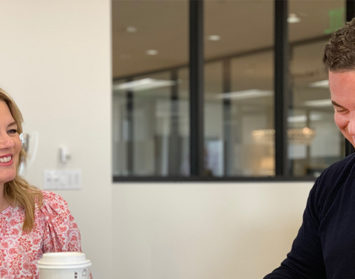How one company is attempting to command the local real estate market
Over the last several years, investors have been bidding up San Diego commercial properties with reckless abandon. And every time it looks like the party may be over, along comes another investor, willing to pay even more.
Enter the Irvine Company, a savvy real estate company with a history of owning and maintaining quality office buildings throughout Orange County. In May, Irvine purchased Equity Office Properties San Diego portfolio including 15 buildings within the University Towne Centre (UTC) sub- market. Now in escrow on another eight office properties at Bridge Pointe Corporate Center, Irvine is poised to control the lion’s share of the UTC Class A office leasing market. And this in addition to their dominant market-share already assembled in downtown San Diego.
So what does it mean when The Irvine Company drives down the freeway to play “Monopoly” with San Diego’s best office buildings? “The Irvine Company is different from other institutional investors,” says John Jarvis, a principal and senior vice president with The Irving Hughes Group. “They have tremendous free cash flow, little or no debt, and a massive portfolio of fully depreciated office buildings throughout Orange County. I don’t think they even try to calculate an IRR when they buy these buildings. I think they are happy to have found a place nearby to reinvest their Orange County earnings.”
Smart Business spoke with Jarvis about the Irvine Company’s move into San Diego.
Why are so many people concerned about the Irvine Company’s recent investments in San Diego?
There has been a lot of talk lately about record high prices being paid by institutional investors for San Diego properties. The Irvine Company is a natural lightning rod for that attention for two reasons: volume and price. Since 2003, Irvine has spent close to $2 Billion in San Diego. Their targeted purchase of Class A office properties will put them in a position to control over 62 percent of the Class A leasing market in UTC and 58 percent of downtown. In addition to the sheer volume, Irvine continues to pay top dollar for quality properties, setting record high prices on many of their purchases. Pacifica Tower in UTC is estimated to have sold at $572 per square foot. Never in the history of San Diego has one landlord made this kind of play and had this kind of concentration of ownership in our Class A office properties.
Why is this creating anxiety for San Diego companies?
At the end of the day, the Irvine Company is a smart real estate investor. And there is only one way that Irvine, or any other real estate investor, earns a return on these purchases, and that return is from the office rent that our clients pay.
So companies are expecting Irvine to raise rents?
Yes, everyone expects Irvine to raise rents. But it’s no slam dunk. We have been vocal in the local press about the dysfunction in the commercial real estate market today — the lack of solid market fundamentals, such as robust job growth and positive net absorption that could justify this unprecedented investment activity. Instead, we see rampant speculation, with institutional investors trading buildings at ever-increasing prices predicated on ‘pro- forma’ rents that may or may not ever be realized. And here is the key point that people are missing: Whether we are talking about the Irvine Company or any other investor, just because an investor pays a high price for their property doesn’t mean they can raise your rent. It doesn’t work that way.
Then what is going to happen?
Econ 101 — rents don’t follow prices. Prices follow rents. And the only reason rents will rise is when tenant demand exceeds the supply of space, and we don’t see that today. The good news for San Diego is that The Irvine Company is a long term owner. They didn’t buy these irreplaceable assets for what they can generate in income in the next two to three years. Unlike the institutional speculators, Irvine will take a long-term view, put capital into these buildings to fix deferred maintenance and improve the quality of their assets. Irvine understands the market for tenants, and yes, they are going to try and push rents. It’s our job to push back, and to use our collective bargaining on behalf of tenants of all sizes to make sure that rents don’t move unless and until the market supports it.
Let’s not forget that in San Diego there is currently 4.65 million square feet of sublease space, and that number is steadily increasing. People are surprised to learn that the average time on the market for available space is a shocking 15 months! These are important market facts, and they don’t point to rising rents. Like we’ve said all along, the only things that will eventually drive up rental rates are robust job growth, positive net absorption and the good old rule of supply and demand.
John Jarvis is an executive vice president of Hughes Marino, a global corporate real estate advisory firm that specializes in representing tenants and buyers. Contact John at 1-844-662-6635 or john@hughesmarino.com to learn more.









